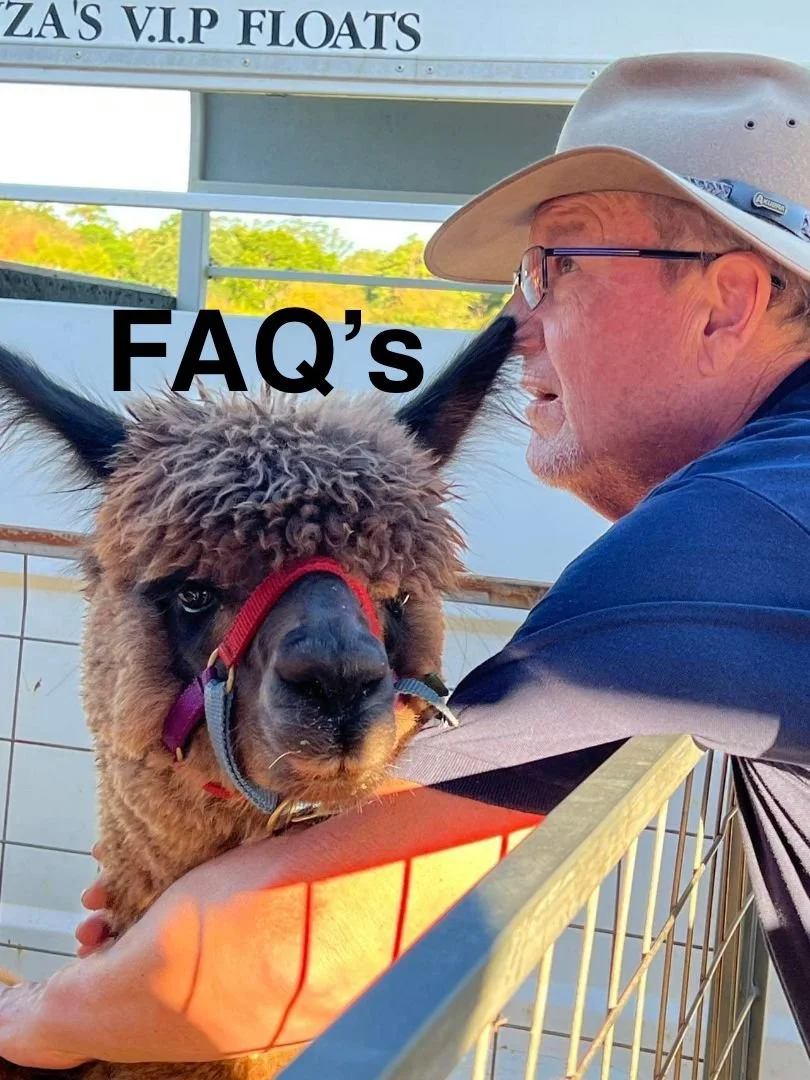FAQ's
Alpacas at a glance:
- They live for 15 to 20 years
- When mature they stand approximately 1 metre (at the shoulder)
- They weigh between 70- 80 kg
- They are pregnant for approximately 335 to 350 days (that's 11 to 11.5 months!)
- They give birth to young weighing usually 6 - 8 kg.
History:
- They were prized by the ancient Incan civilisation where their fleece was reserved for the Incan royalty
- They come from the high altitude regions (Antiplano) of Bolivia, Chile, Argentina and Southern Peru.
- There are currently 3 to 4 million Alpacas in their homeland,
- They were first imported to Australia from Chile in 1989 and from Peru in 1999 (although 4 were imported to South Australia in 1857). There are currently over 100,000 alpacas in Australia.
- Research shows that in Australia 80% of alpacas are in herds of 10 or less.
So what's in a name?
- As we've seen alpacas are a native of South America, so most of the names associated with them are Spanish.
- Cria: A baby alpaca
- Tui: An adolescent alpaca
- Hembra: Adult female
- Macho: Adult male
But wait...there's more:
There are 2 types of alpacas:
Huacaya (pronounced wua'ki'ya) They make up approximately 90 % of the worldwide stock. It's the one that looks like it has an afro, with soft thick fibre all over and what look like mutton chop sideburns.
Suri (pronounced soori) They make up the smaller percentage of alpacas worldwide. Their fleece looks like ringlets similar to dreadlocks and their fleece is more slippery and silky to the touch.
Are they related to Llama's?
Why yes they are. They are both from the Camelid family.
- Family Camelidae
- Genus Camelus:
- Bactrian Camel 2 humps (Camelus bactrianus)
- Dromedary 1 hump (Camelus dromedarius)
- Genus Lama
- Guanaco (Lama guanicoe).
- Llama (Lama glama)
- Genus Vicugna
- Viçuna (Vicugna vicugna)
- Alpaca (Vicugna pacos) Alpacas were originally thought to have evolved from Llamas and were called Lama pacos. With the advent of DNA research in 2001 they were reclassified into the Vicugna genus.
- Genus Camelus:
An interesting fact: all four of the South American Camelids can interbreed and produce fertile offspring.
Alpacas spit don't they?
There are many reasons that Alpacas spit
- Animals spit at each other if they are competing for space or food.
- Pregnant females spits at a macho. The “spit-off” is routinely used to see if conception has occurred, and may be followed up with an ultrasound later.
- As for spitting on people... they give you plenty of warning, well most do. Ears back and neck hooked, then the first spit is usually just air and not directed at you. The second spit will be whatever they have in their mouths, The third spit, well let's just say try not to be around for the third one.

